



|
|
.: the story behind the corvette conversion
Why Build an Electric Corvette?
Sitting in
the garage
gathering dust I had a 1976 Corvette, as well as
a Ferrari (Miami Vice era) that I had built in
1980's, and I was tired of both cars.
I had put 3,000 miles on the Ferrari in 20 years!
And the Corvette, it was a project/demo car that I started in
1993 to show the skills available at our automobile restoration and
customizing shop. As business picked up,
the Corvette got pushed to the back of the shop, and was last on the list of work that needed to be done.
In 2009, I wanted my garage for something more than storing a drivable and non-drivable car (the Ferrari and the Corvette). So I put the Ferrari up for sale on eBay and was paid my asking price, while the Corvette was ready to be parted out and sold to the local salvage yard.
But then a funny thing happened.
I had put a lot of time and labor designing and customizing this car. I had chopped eighteen inches off the entire length while appearing to add
about 8 inches to the width. The taillights were from a Corvette ZR-1 because I liked that style.
And the rear opening for the exhaust,
that was going to be a "bundle of snakes" exhaust. Since the dawn of time, Corvettes had pop-up headlights (okay since 1963). But they were big,
clunky, and no longer unique. There were some rectangular headlight conversions that looked like after-birth so I needed to design something
aggressive that was integrated into those curves. I wanted something narrow. Really narrow. Narrower than anything I had seen. Narrower than, well, really narrow.
And after a lot of searching, I found some halogen lights that are less than 2" tall. Naturally, I had to design some sort of adjustable mounting brackets
so I could align them as well as fit the sloping curves of the car.
So, I had put countless hours into this car and decided I couldn't scrap it. But what to do with it. Hey, I'm a green guy (VW Golf TDI, 50mpg),
how about an electric conversion. There are not a lot of electric Corvettes out there, and not any that I would put my name on, so I had a new vision for my car.
A zero-emission electric Corvette.
Since I was remaking the car, I decided to update the frame to a 1982 because it has a cool looking aluminum differential carrier that I used as inspiration
for the new aluminum motor mounts.
This is some background - I
still have to get the conversion story! |
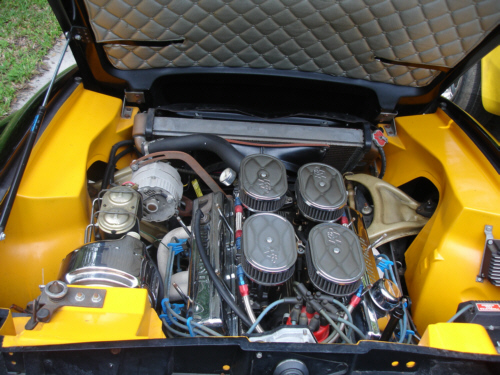 |
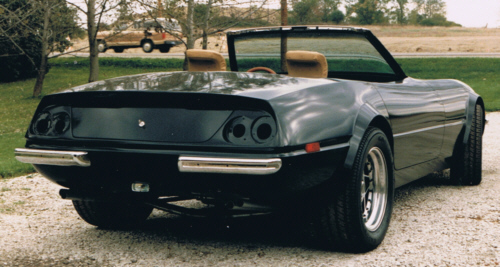 |
|
This car now resides in California where
it's doing more than gathering dust. |
I put countless hours in this
car getting the lines straight -
including the bumpers. |
 |
 |
|
The car started as a Corvette -
by coincidence it was a 1976, the same
as the electric conversion. |
In the '80s Emron was the hot
ticket so I used that on the frame. The
control arms and most of the suspension
was cadmium plated with clear Emron. I
wanted that "rainbow" effect that comes
with yellow cad., but it did workout
because the parts weren't polished
before plating. |
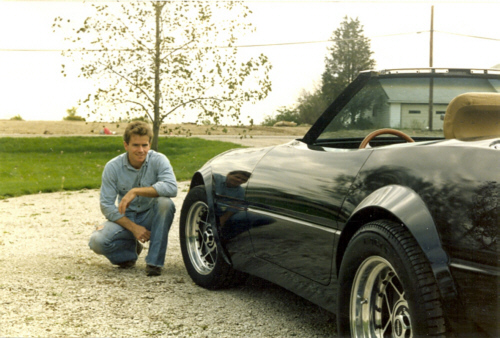 |
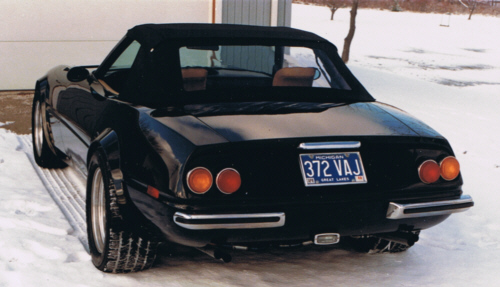 |
|
Until this picture was taken, I
hadn't seen the car I was building. I
had been working on every little piece
for so long that I hadn't seen the big
picture (literally). |
I didn't drive the car in the
snow, but I was putting in a show in
Detroit so I backed it out and took this
picture. I love the this angle. |
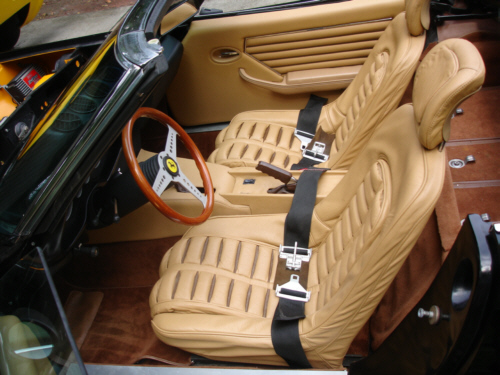
Everything about this car was
expensive - including the custom leather
seats.
|
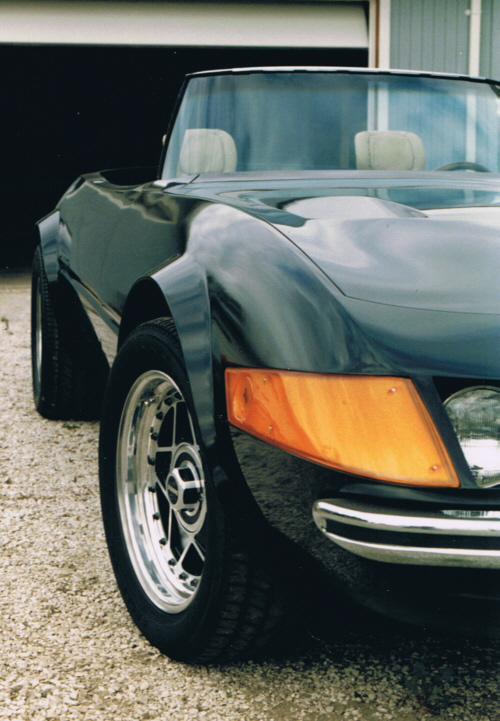
This is another nice
shot. The wheels are 3-piece Compomotive,
16". The hot tire at that time were the
Goodyear Gatorbacks - 255-50 16's in the
back, and 245-60 16's in the front. |
|
|

